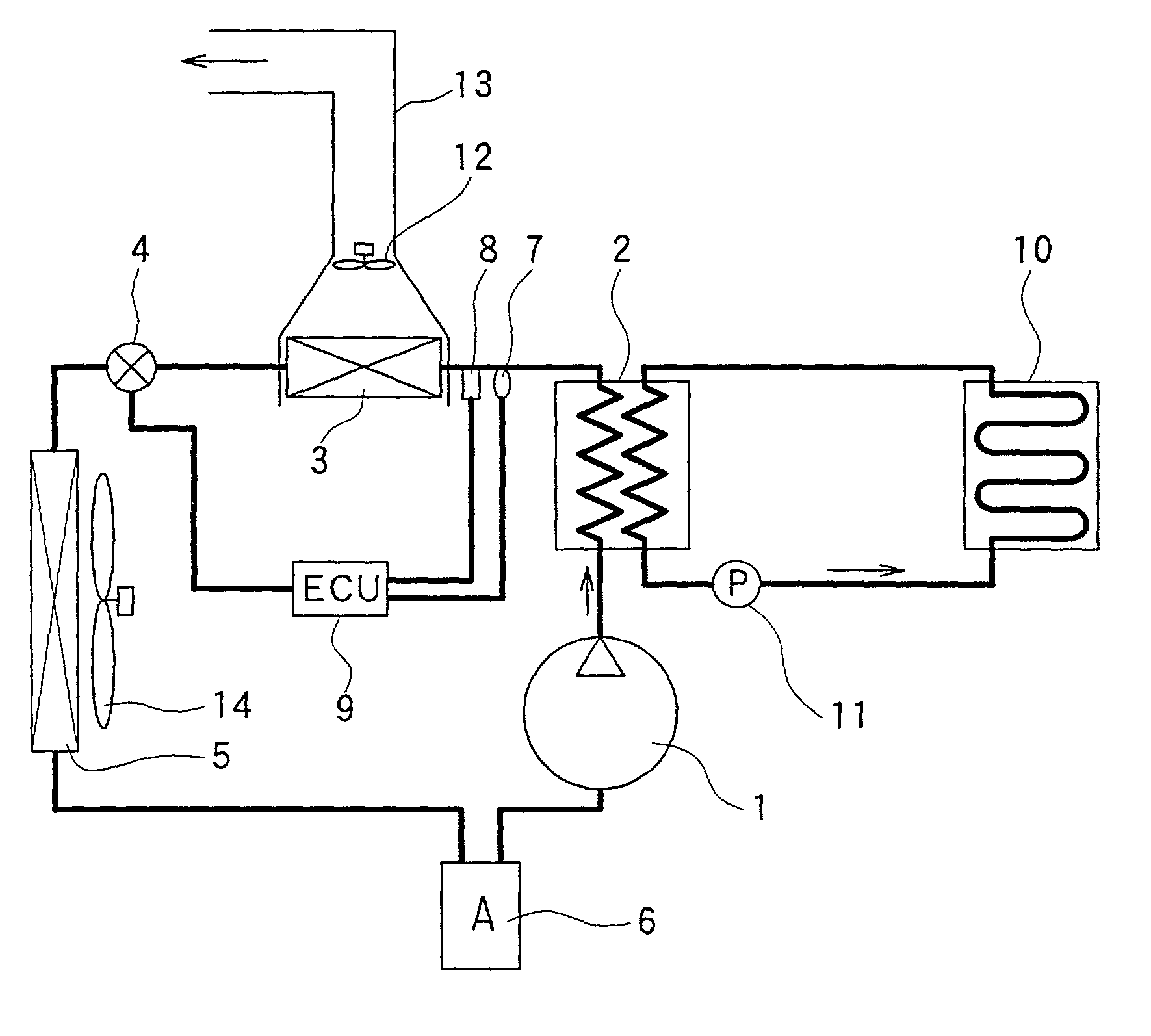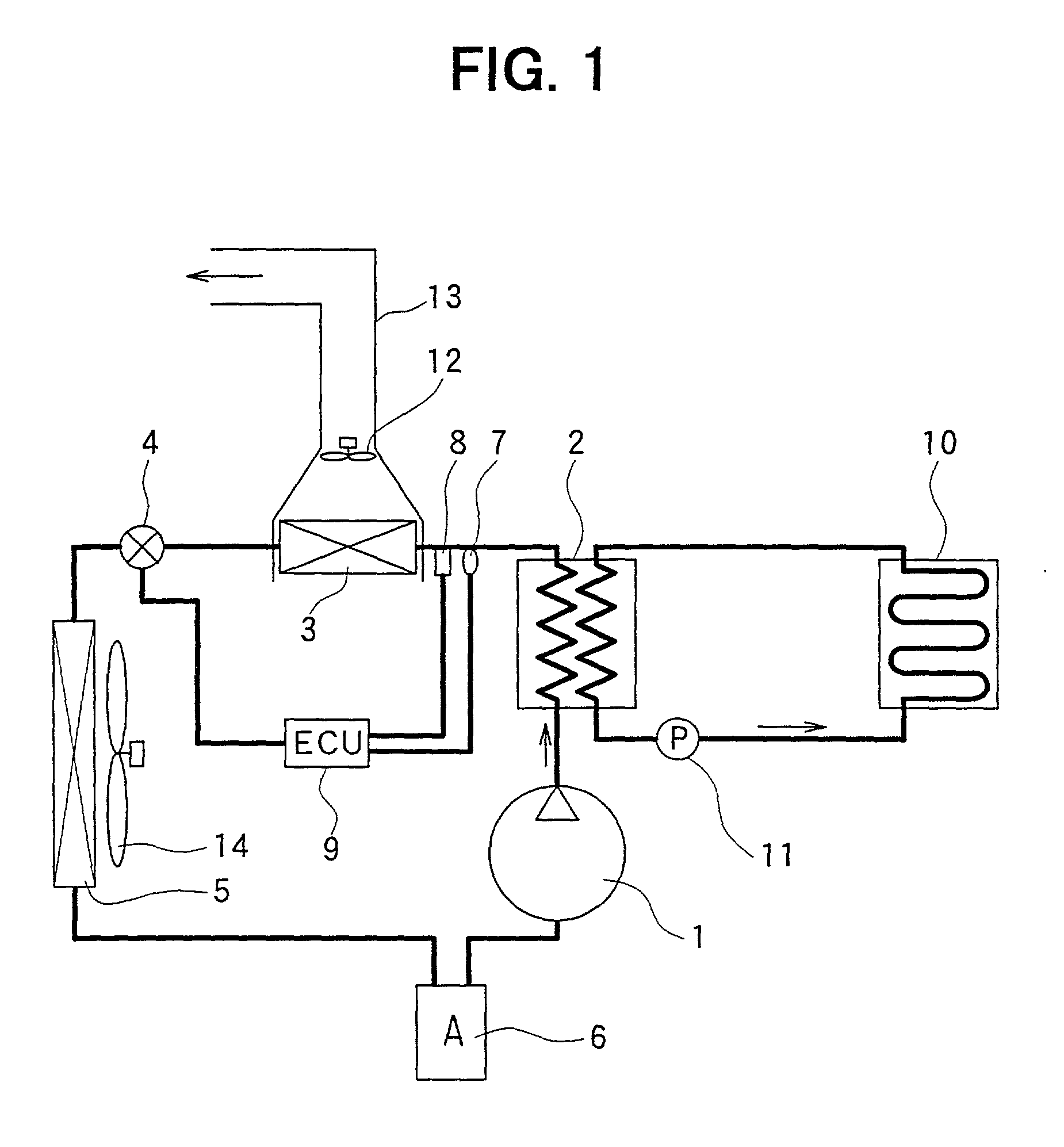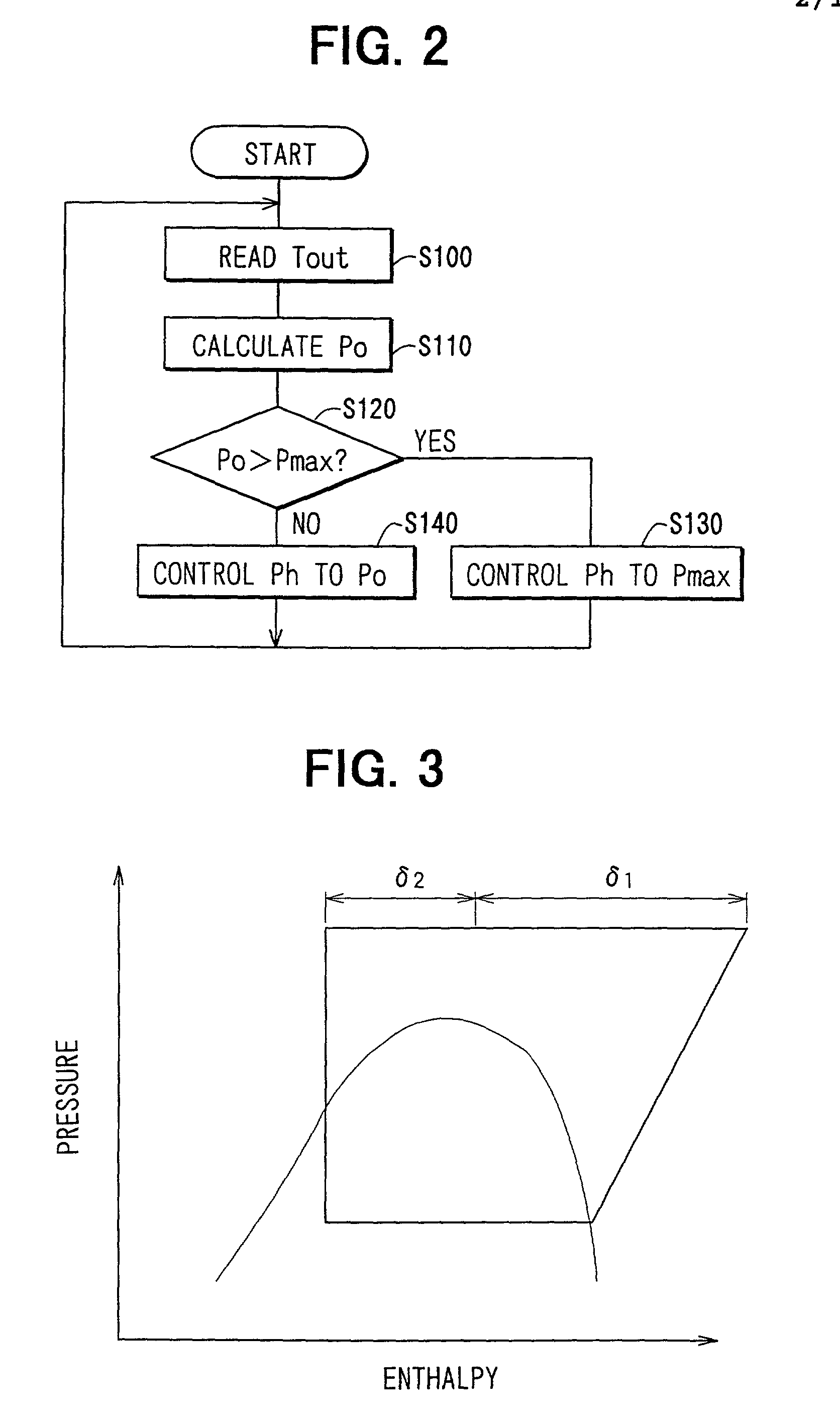Heat Pump Cycle
a heat pump and cycle technology, applied in the direction of heat pumps, lighting and heating equipment, electrochemical generators, etc., can solve the problems of unnecessarily increasing power consumption of compressors, reducing the heat quantity (enthalpy) to be extracted from heat pumps, and deteriorating the coefficient of performance of heat pumps
- Summary
- Abstract
- Description
- Claims
- Application Information
AI Technical Summary
Benefits of technology
Problems solved by technology
Method used
Image
Examples
first embodiment
[0032] In the first preferred embodiment, a heat pump cycle of the present invention is typically applied to a heating device used for a home. FIG. 1 is a schematic diagram showing a heating device used for the home in accordance with the In the heat pump cycle of FIG. 1, a compressor 1 sucks a refrigerant (e.g., carbon dioxide in the present preferred embodiment) and compresses the refrigerant to a pressure not less than the super-critical pressure of the refrigerant. A first high-pressure side heat exchanger 2 is disposed to perform a heat exchange between a high pressure refrigerant discharged from the compressor 1 and hot water supplied for heating a floor (hereinafter referred to as hot water).
[0033] A second high-pressure side heat exchanger (supplementary heat exchanger) 3 is disposed to perform a heat exchange between the high pressure refrigerant flowing out from the first high-pressure side heat exchanger 2 and air blown into a bathroom (not shown). An electronic pressure...
second embodiment
[0054] Accordingly, in the second embodiment, the permissible maximum pressure Pmax is changed so that the permissible maximum pressure Pmax increases in response to an increase in the evaporation pressure (outside air temperature) in the low-pressure side heat exchanger 5. Accordingly, the pressure control valve 4 is controlled to sufficiently heat the hot water and to make the refrigerant temperature discharged from the compressor 1 lower than the heat-resistance temperature of the compressor 1.
[0055] The control operation of a heat pump cycle according to the second embodiment will be described based on the flow diagram shown in FIG. 6.
[0056] When the starting switch of the heat pump is turned on, first, the high-pressure side refrigerant temperature Tout is read at step S200 by using the refrigerant temperature sensor 7 (see FIG. 1) and the target high-pressure side refrigerant pressure Po corresponding to the high-pressure side refrigerant temperature Tout is calculated based o...
third embodiment
[0066] In the third embodiment, the first high-pressure side heat exchanger 2 is arranged at a downstream water side of the hot-water heater 30 and heats the hot water flowing into the FC stack 20, and the second high-pressure side heat exchanger 3 is arranged at the upstream air side of the hot-water heater 30 in the casing 32, and heats air flowing into the passenger compartment.
[0067] Next, the operation of a heat pump cycle according to the third embodiment will be described.
[0068] (1) Warming-up operation of the FC stack 20
[0069] When the temperature of the FC stack 20 is low, in order to start the operation of the FC stack 20, the FC stack 20 needs to be heated to increase its temperature (to be warmed up). Therefore, in order to warm up the FC stack 20, the core surface (portion through which air passes) of the hot-water heater 30 is closed by the warm air adjustment door 31 so that air blowing toward the passenger compartment does not pass through the hot-water heater 30. In...
PUM
| Property | Measurement | Unit |
|---|---|---|
| density | aaaaa | aaaaa |
| heat resistance temperature | aaaaa | aaaaa |
| temperature | aaaaa | aaaaa |
Abstract
Description
Claims
Application Information
 Login to View More
Login to View More - R&D
- Intellectual Property
- Life Sciences
- Materials
- Tech Scout
- Unparalleled Data Quality
- Higher Quality Content
- 60% Fewer Hallucinations
Browse by: Latest US Patents, China's latest patents, Technical Efficacy Thesaurus, Application Domain, Technology Topic, Popular Technical Reports.
© 2025 PatSnap. All rights reserved.Legal|Privacy policy|Modern Slavery Act Transparency Statement|Sitemap|About US| Contact US: help@patsnap.com



